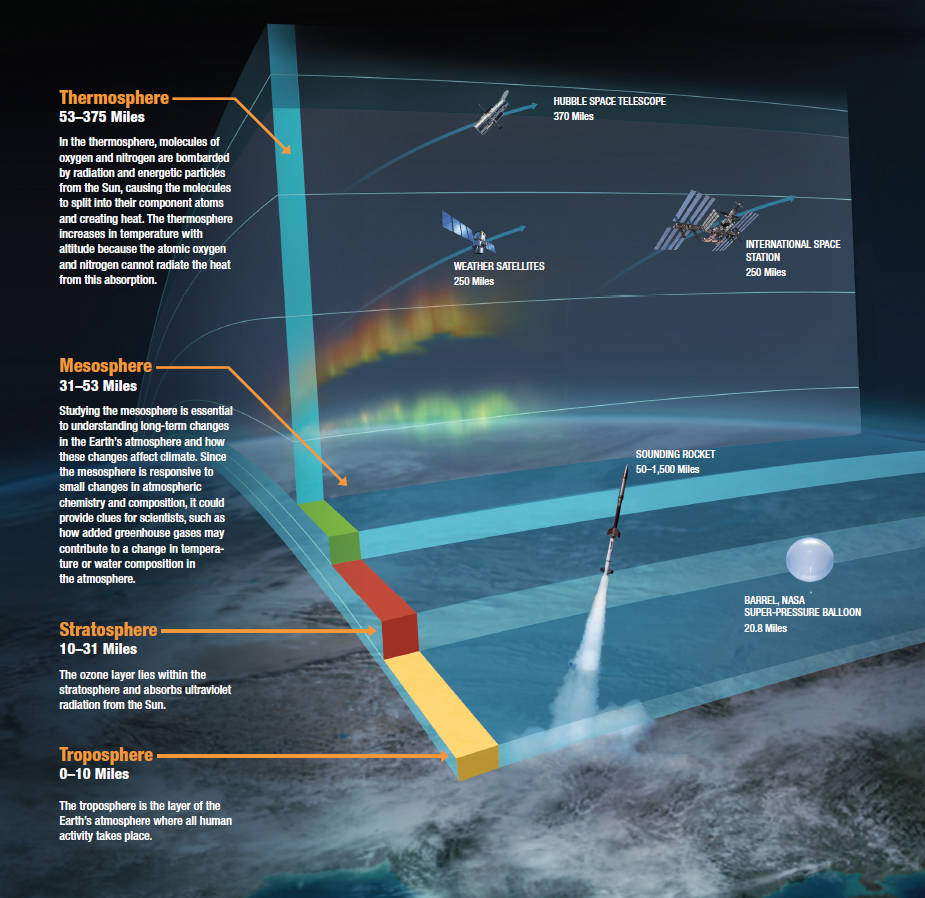The Earth’s atmosphere has four primary layers: the troposphere, stratosphere, mesosphere, and thermosphere. These layers protect our planet by absorbing harmful radiation.Thermosphere 53–375 Miles – In the thermosphere, molecules of oxygen and nitrogen are bombarded by radiation and energetic particles from the Sun, causing the molecules to split into their component atoms and creating heat. The thermosphere increases in temperature with altitude because the atomic oxygen and nitrogen cannot radiate the heat from this absorption.Mesosphere 31–53 Miles – Studying the mesosphere is essential to understanding long-term changes in the Earth’s atmosphere and how these changes affect climate. Since the mesosphere is responsive to small changes in atmospheric chemistry and composition, it could provide clues for scientists, such as how added greenhouse gases may contribute to a change in temperature or water composition in the atmosphere.Stratosphere 10–31 Miles – The ozone layer lies within the stratosphere and absorbs ultraviolet radiation from the Sun.Troposphere 0–10 Miles – The troposphere is the layer of the Earth’s atmosphere where all human activity takes place.
Credit: NASA
1 min read































